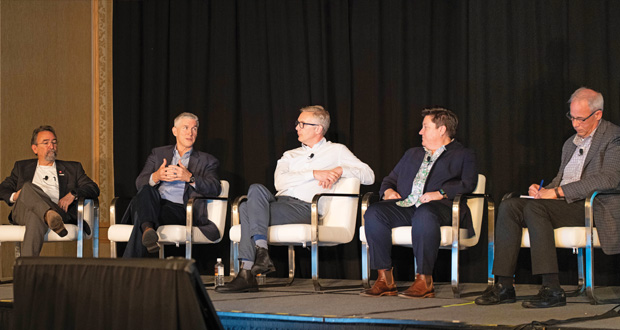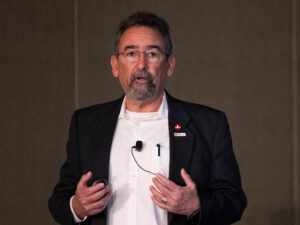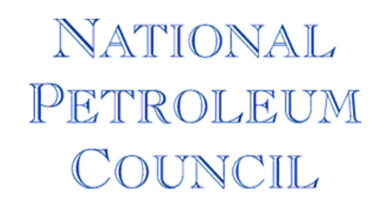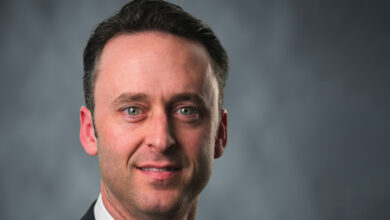Industry shifting from blame to learning by applying human and organizational performance
HOP principles can help companies to build more resilient systems, address gaps between work-as-imagined and work-as-done

By Jessica Whiteside, Contributor
To err is human — and so is the ability to analyze the systems shaping those errors and learn what needs to change. Those factors are part of the human and organizational performance (HOP) approach that companies in the oil and gas sector are tapping into for safer performance.
HOP is a way of thinking about work and how people, culture, equipment and systems interact with one another. It is built around five main tenets: (1) error is normal, (2) blame fixes nothing, (3) context and systems influence behavior, (4) learning and improving are essential, and (5) leader response matters.
The oil and gas industry has come a long way in reducing its serious injury rates, but there were still more than 33 fatalities in the industry worldwide in 2022, said Marissa Badenhorst, VP of Health, Safety and Environment for Chevron, citing fatal incident report data published by the International Association of Oil and Gas Producers.
“HOP is the answer for us to truly get to fatality-free and serious injury-free operation, because we have to understand how people interact with the systems around them to be able to fix it and do something about it,” she said during a panel discussion at the 2024 IADC/SPE International Drilling Conference in Galveston, Texas, on 7 March.
Chevron began integrating HOP principles into its operations more than 10 years ago, starting with its incident investigation process. Ms Badenhorst recalls the moment she realized the value of viewing safety through an HOP lens. She was a maintenance manager at the time, talking with a machine shop worker whose finger had just been amputated when he tried to un-jam a piece of equipment. The worker apologized to Ms Badenhorst and said he would be back to work the following week for his discipline papers.
“This guy just lost a finger … and he’s apologizing to me. Why is that?” she said. Rather than pursuing disciplinary action, the investigators dug into the context around the incident and found the worker did not have access to the right tool for the job. At a time when the company was urging cost control, his team had elected to make do with the tools they had, rather than spend $1,000 on the tool they needed. That example of an unwise choice made with good intentions was “eye opening,” Ms Badenhorst said, and reinforced that you can either blame and punish, or you can learn and improve.
“It’s only when you go to the people closest to the work, and you create a culture where they can tell you what’s getting in their way so you can learn and improve, that we’re actually going to make the progress we need to make.”
She stressed that HOP is not about abandoning accountability; rather, it is about putting accountability in the right place, and that’s often not with the frontline worker.

Learning through observation
Patterson-UTI Drilling Company began integrating HOP principles into its operations last year after noticing a plateau in its safety performance. President Mike Garvin said the company was experiencing repeat events and struggling to understand what it needed to do differently to turn things around, despite robust audit processes.
Part of the problem was what Mr Garvin called the normalization of deviance, when a process gets altered incrementally over time as new people come in and make tweaks or take shortcuts, until eventually these altered practices become the new normal. Allowing such deviation to persist is a leadership issue, he noted, and leaders need to figure out how to keep the execution of work close to the intended process.
With that goal in mind, Patterson-UTI formed what it called learning teams to better understand how its hundreds of rig crews conduct their work and what factors influence their decisions, then share best practices across the organization. Each of the learning teams is led by a senior operations expert and a senior HSE expert pulled from the field. They spend significant time on each rig making observations of alignment between work-as-imagined (the expectations set out in a process) and work-as-done (the reality of how crews actually complete a task).
Their observations are guided by a list of 81 questions tied to the company’s core values, on themes such as safety, operational excellence, and honesty and integrity. The questions were developed jointly by the learning teams and a leadership steering committee, along with protocols designed to ensure consistency among the observers. These are not questions they ask the crews, but rather questions the learning teams answer themselves through their observations.
They apply three levels of criticality to their observations, which are collected and shared in a database to help establish how a rig is performing relative to expectations and whether corrective actions have made a difference on subsequent visits. Since their formation in July 2023, the learning teams have visited every rig in the Patterson-UTI fleet twice and embarked on a third round of observations.
The initiative has given the company an opportunity to impart greater consistency across its business and to further embed its core values into its culture, Mr Garvin said.
Focusing on presence of safeguards
At Transocean, HOP principles are evident in how the company has transformed its perspective on operational safety, said Dan Haslam, the company’s Director of Operational Integrity and HSE. Transocean used to measure safety performance in terms of the absence of injuries. Now, it talks about safety as being the presence of safeguards.
The incident that triggered this pivot was a fatality on a rig that had gone more than 18 months without a recordable incident, highlighting that good performance today is no predictor of future performance.
This shift has led to a focus on learning from normal work through the company’s WorkSight assurance and verification system. Crews monitor for the behaviors and conditions that need to be present (or not present) for safe outcomes — and celebrate the detection of opportunities for improvement.
Rigs that self-identify these “weak signals” get better safety outcomes, Mr Haslam said. The process also helps leaders modify their expectations and support the real ways of working by making it easier to comply with the systems in place.
“Learning from failure that doesn’t have consequences actually helps you eliminate failures that do have consequences,” he said.
Transocean has taken another HOP-related step to improve the resiliency of its operations: the creation of a critical operations authorization process to help crews performing critical operations that could result in a major accident if done wrong. The process is supported by two global critical operations assurance centers in Houston and Stavanger, staffed 24/7 by people who come from the offshore rig environment with expertise in the marine, drilling and subsea disciplines. They help the rig team plan the operation, then monitor the execution of each step virtually.
Since launching the centers in 2023, the company has had more predictable results with fewer downtime events where the cause was related to an element of human interaction rather than just a mechanical failure, Mr Haslam said.
“When we learn something on a Monday morning through this process, the next rig that does that activity Monday afternoon is immediately benefiting from it,” he said. “We get to feed learnings back into the organization in real time, and that separation between work-as-imagined and work-as-done is closed.”
Getting started with HOP
ExxonMobil has long embedded HOP principles into its business, manifested, for example, in its deployment of learning teams, use of red zone observation management technologies, and incorporation of human factors engineering into facility design.
Leadership support is critical to establishing a HOP-aligned safety culture, particularly from the first line of leaders closest to the crews, said Rod Henson, VP, Wells, for ExxonMobil. He outlined five elements of the company’s approach to safety culture that could help others embarking on their own HOP journeys.
First is to build a culture where it is OK to ask for help. Second is to monitor and address physical and mental fatigue and support a culture where workers feel comfortable identifying fatigue in themselves or their colleagues and suggesting safer alternatives. Third is to require people to demonstrate competency (not just certification) before they begin operating, through measures such as drills and two-way engagement with open-ended questions. Fourth, in relation to stop work authority, is to build a culture and systems where it doesn’t require courage to stop the job because the company has made it “really, really easy to stop the job,” Mr Henson said. Fifth is to build highly collaborative teams that thrive on being proactive instead of reactive.
Creating such cultures requires alignment and consistency, including ensuring that reward and recognition systems are aligned with the desired behaviors. That won’t happen overnight, Mr Henson said.
Ms Badenhorst noted that companies can start small by building HOP principles into their everyday practices without having to train frontline workers in the intricacies of HOP theory.
“You’re going to learn stuff about your behaviors and your systems that you’re not going to like, but that’s the stuff that’s really going to make the difference,” she said. DC



